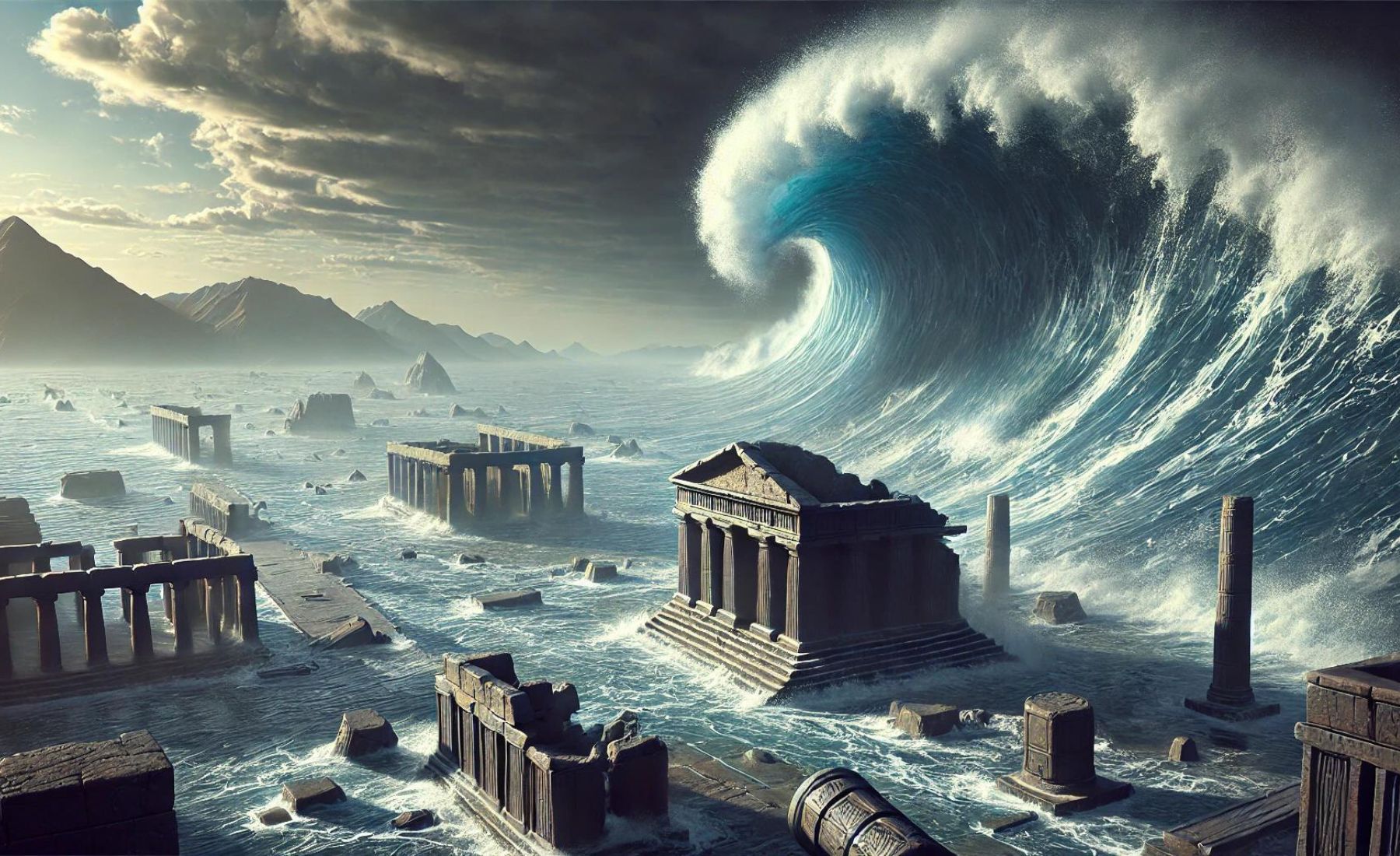Exploring Lost Civilizations After Ancient Cataclysms
Throughout human history, civilizations have risen, thrived, and fallen—some leaving behind enduring monuments, others vanishing almost without a trace. What if many lost civilizations disappeared not merely because of cultural decline but because of sudden, cataclysmic events? Ancient myths, geological records, and new archeological discoveries suggest that global catastrophes may have repeatedly reshaped the human story, erasing entire chapters of our past.
Lost Civilizations in Ancient Traditions
Across cultures, stories of great floods, cosmic events, and sudden destructions recur with striking similarity. Plato’s Timaeus and Critias describe a mighty civilization—Atlantis—destroyed “in a single day and night of misfortune.” Mesoamerican myths speak of successive “Suns” or ages, each ending in a different cataclysm: by jaguars, wind, fire, and water. Ancient Egyptian lore hints at a “Zep Tepi,” or First Time, when gods walked the earth before a great deluge.
Could these tales be cultural memories of real, devastating events? If so, they may point to civilizations that flourished long before our conventional timelines suggest—civilizations that were lost not through slow decline, but through sudden interruption.
The Impact of Cataclysms on Civilization
The Younger Dryas period, roughly 12,800 years ago, stands as one of the most dramatic climatic shifts in human history. Geological evidence points to rapid cooling followed by intense warming, accompanied by megafloods, rising sea levels, and possibly cosmic impacts. Many researchers, including Graham Hancock and Robert Schoch, argue that this tumultuous era may have wiped out advanced prehistoric cultures, leaving only scattered survivors to rebuild in a harsh new world.
Possible Causes of Civilizational Collapse
-
Cosmic Impacts: The Younger Dryas Impact Hypothesis suggests a fragmented comet may have struck or exploded over North America, triggering widespread wildfires, sudden climate shifts, and megafaunal extinctions. Such an event could have obliterated coastal settlements.
-
Megafloods and Sea Level Rise: Melting ice sheets caused ocean levels to surge more than 120 meters, inundating vast stretches of habitable land—including potential urban centers on now-submerged continental shelves.
-
Volcanic Eruptions and Seismic Activity: Large eruptions and earthquakes could have devastated isolated cultures and destroyed infrastructure and records.
-
Wind and Fire Events: Global wildfires would have scorched landscapes, erasing wooden structures, art, and archives.
These cataclysms may have pushed humanity into survival mode, erasing evidence of early complex societies.
Traces Beneath the Waves
Modern sonar and underwater archaeology are revealing a tantalizing possibility: lost civilizations beneath the sea. Along the Indian coast, the submerged city of Dwarka hints at organized urban planning thousands of years earlier than expected. In the Caribbean and Mediterranean, anomalous underwater structures may indicate human activity now drowned by post-glacial sea-level rise. The Sunda Shelf (present-day Southeast Asia), once a vast fertile plain, was engulfed as ice melted, potentially scattering populations who carried fragments of cultural memory to new lands.

Rethinking History Through Alternative Perspectives
Scholars like Robert Schoch have argued that the erosion patterns on the Great Sphinx suggest exposure to heavy rainfall thousands of years before dynastic Egypt—perhaps during the wetter “Fertile Sahara” period. Robert Bauval proposed the Orion Correlation Theory, linking the Giza pyramids to the stars of Orion’s Belt as they appeared around 10,500 BCE. If true, these findings imply that the builders inherited or revived knowledge from earlier civilizations that predated the known Egyptian dynasties by millennia.
Meanwhile, independent researchers like Graham Hancock have challenged the linear view of human progress, suggesting a forgotten advanced culture may have played a pivotal role in jump-starting civilization after the Younger Dryas cataclysm. While these theories remain controversial, they provoke valuable questions: How much of history is missing? What lies buried beneath layers of sediment and water?
Key Concepts to Explore
-
Cataclysms as historical resets: Civilizations may have repeatedly risen and fallen, their knowledge lost between cycles.
-
Submerged evidence: Post-glacial sea-level rise could hide entire cultures beneath the oceans.
-
Ancient myths as memory: Flood and disaster myths may encode real events.
-
Revisiting archaeological timelines: Structures like the Sphinx and Göbekli Tepe challenge traditional chronologies.
-
Burning of libraries and records: Cultural knowledge has been systematically lost through human and natural events alike.
A History Written in Fragments
Perhaps the reason we find so few traces of these lost civilizations is not because they never existed—but because they were destroyed, submerged, or erased. Our current archaeological record may represent only the last few pages of a vast book, most of which was burned, washed away, or shattered by cosmic forces.
As new discoveries emerge—from genetic evidence to underwater ruins—the timeline of humanity continues to stretch further back. The White Sands footprints, dating to over 20,000 years ago, and ancient DNA studies are already challenging long-held migration theories. Could future findings reveal entire forgotten civilizations?
Additional reading






